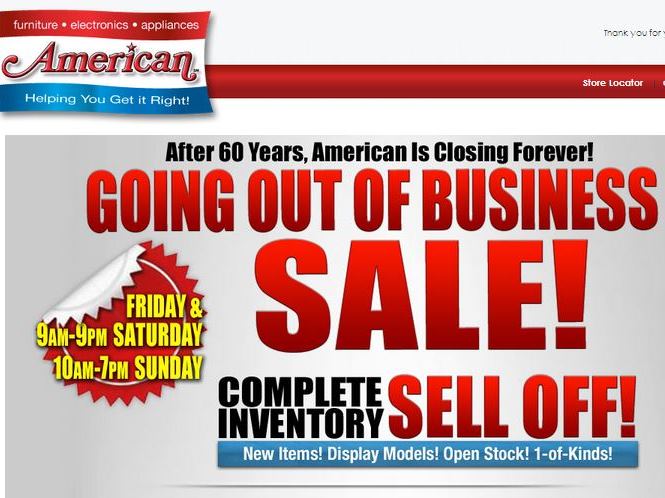
Last year on TWICE.com I wrote an “insider’s perspective” about RadioShack, outlining the challenges it faced, which ultimately led to a bankruptcy filing and subsequent purchase by Standard General.
It’s since re-emerged as a co-branded Sprint/RadioShack chain, but I suspect that it is plagued by the same set of challenges, likely underscored by the recent departure of Ron Garriques just months after his appointment as CEO. That makes five CEO’s in four years. Interesting, if not amazing.
I closed the article by stating that more retailers will face similar challenges, and recent headlines in TWICE – “Sears Realigns To Help Right The Ship,” “Conn’s Profits Crumble On Credit Segment Losses,” “Store Closings Continue At Staples,” and “hhgregg: Another one bites the dust at troubled chain” – would suggest that the issues I outlined went beyond RadioShack, and aren’t going away.
As I wrote then, the dynamics of the industry, along with consumer trends, combine to create a real threat to retailers. Among them:
*The digitalization of CE has resulted in the homogenization of products, making it very hard for manufacturers to produce truly differentiated devices, especially from a performance perspective;
*The vendor landscape has changed significantly, with Apple and Samsung being the real influencers of the entire industry. A recent report suggests that these two brands have a nearly 75 percent share of the U.S. smartphone market;
*Vendors compete with retailers. My count from last year showed that the Big Three carriers had over 5,500 combined locations. Apple has over 400 stores. And other vendors are opening stores as well.
*Selective distribution is a bygone concept, thus the biggest-selling products can be purchased anywhere. Hard to blame manufacturers for this, as they must protect their sales;
*Consumers are using fewer devices, as the smartphone is now their GPS, digital camera, MP3 player, voice recorder and fitness tracker, not to mention phone and written communicator; and
*Price has become the only real differentiator and as such, consumers have less loyalty toward a particular retailer, brick-and-mortar or online. There’s little reason other than price for any seller to earn their loyalty. Maybe convenience, but not much else.
What is interesting is that struggling retailers believe they are doing the right things to improve their businesses. In many cases however, nothing could be further from the truth. We read about great brand recognition (recognition does not equal loyalty); expanded product assortments (which is ironic, as consumers are using fewer, not more products); and quality customer service (from the retailer’s point of view). Yet year after year comp store sales decline, penny profits shrink, and transactions and traffic are down.
If you look, you’ll see plenty of activity. A set of initiatives is agreed upon, committees are formed and the work begins. The plan of attack likely includes various cost-cutting measures; driving better efficiencies; instituting new best practices; optimizing (a dangerous word) and remodeling locations; raising product margin rates; adopting new pricing policies; and refreshing product assortments. All of these initiatives sound reasonable, but aren’t they the things a company should be doing every day as standard practice? Will any of them address the real issues of declining traffic and transactions?
As the initiative work moves forward, the weekly/monthly meetings begin and the initiative leaders report out on their progress to date, which in many cases is positive. However, sales and profits continue to decline. I submit to you that, if what you’re doing isn’t improving sales, you’re probably focused on the wrong initiatives.
There’s no doubt that “pulling levers” will improve the balance sheet for a few quarters, maybe a year. Then companies find themselves staring at the same issues: declining traffic, transactions, sales, and profits. The answer? Work harder on the initiatives. Really? Working harder on the same things that haven’t been working in the first place, as if energy and effort could solve the problem.
Sometimes the answer needs to be revolutionary, not evolutionary. And that’s where most businesses won’t go. It’s hard. It’s uncharted. Thus the slow death march continues, driven by the “tyranny of incrementalism.”
I want to pause for a moment to say that nothing is absolute, and that what I have outlined thus far surely doesn’t apply to everyone. I also don’t want to offend the people tasked with running the business, most of whom are fine citizens and have the best of intentions. But let’s keep it real. We must have the courage to make big decisions when big decisions are necessary. Anything and everything should be in play. Anything. Everything.
The term “objectivity” is often used in business. Leaders become obsessed with making “fact-based” decisions. Facts absolutely have their place, but there is an irony in being driven solely by the facts, as consumers are largely motivated by their emotions and a set of subjective criteria.
Dictionary.com defines objective as “not influenced by personal feelings, interpretations, or prejudice; based on facts; unbiased: an objective opinion; intent upon or dealing with things external to the mind rather than with thoughts or feelings.” It defines subjective as “pertaining to or characteristic of an individual; personal; individual: a subjective evaluation; placing excessive emphasis on one’s own moods, attitudes, opinions, etc.; unduly egocentric.”
From these definitions we can extrapolate that objective comparisons have no real emotional or personal involvement. However, subjective comparisons bring our senses, emotions and personal opinions into play. A product or brand that can positively stimulate our senses and emotions will have a significant edge over one that doesn’t. And if it costs a little more, we’re more than willing to pay the difference. Brand loyalty is all about subjectivity; how I feel emotionally about a store/brand that has earned my loyalty. For me, Nordstrom would be a perfect example.
And there are a few great examples in our industry — retailers that understand their market, their customers, and the importance of creating an emotional bond with them.
One that immediately comes to mind is Sound Advice in Florida, a great example of a team that truly knows its market, its customers, and then executes on a set of well-defined, customer-centric services. Their complete focus is to exceed customer expectations and deliver the “wow.” They’ve earned a powerful position as the “trusted advisor,” and refuse to compromise in any area of the business. If it doesn’t fit their model, they don’t do it. I’m certain there are others like Sound Advice.
I also realize that the retailers highlighted in the opening paragraph, the ones facing some strong headwinds, have a completely different model. I’m not advocating that they all become Sound Advice. But I am suggesting that they learn the lessons Sound Advice teaches us, the most obvious being that everything they do begins with the customer — their customer. From brand and product selection to customer service and installation, they have and do things that are unique, build amazing loyalty, and can’t be easily knocked off by a competitor.
As for Sear’s, Conn’s, Staples and hhgregg, they have their work cut out for them. I’ve looked at their respective lists of initiatives. Some are good. A lot fall into the group I outlined earlier. I’m rooting for them. I think about them quite often and want them to succeed. Are they prepared to make the big decisions? We shall see…
John Lostroscio is an industry veteran with more than 35 years of experience in merchandising, product management, marketing services, and sales leadership with a diverse group of retailers and manufacturers. Today he is the principal of his own consultancy, Lostroscio & None, LLC, focusing on merchandising and product solutions. He can be reached at [email protected].












